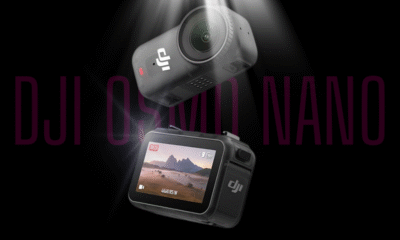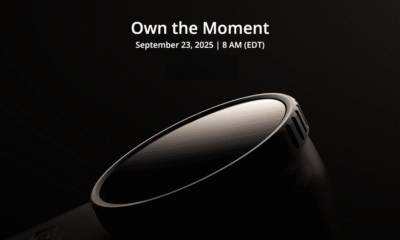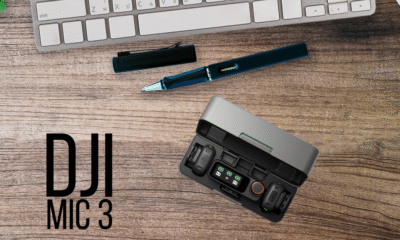Drones
DJI Flip Review: The Ultimate Beginner Drone Has Arrived
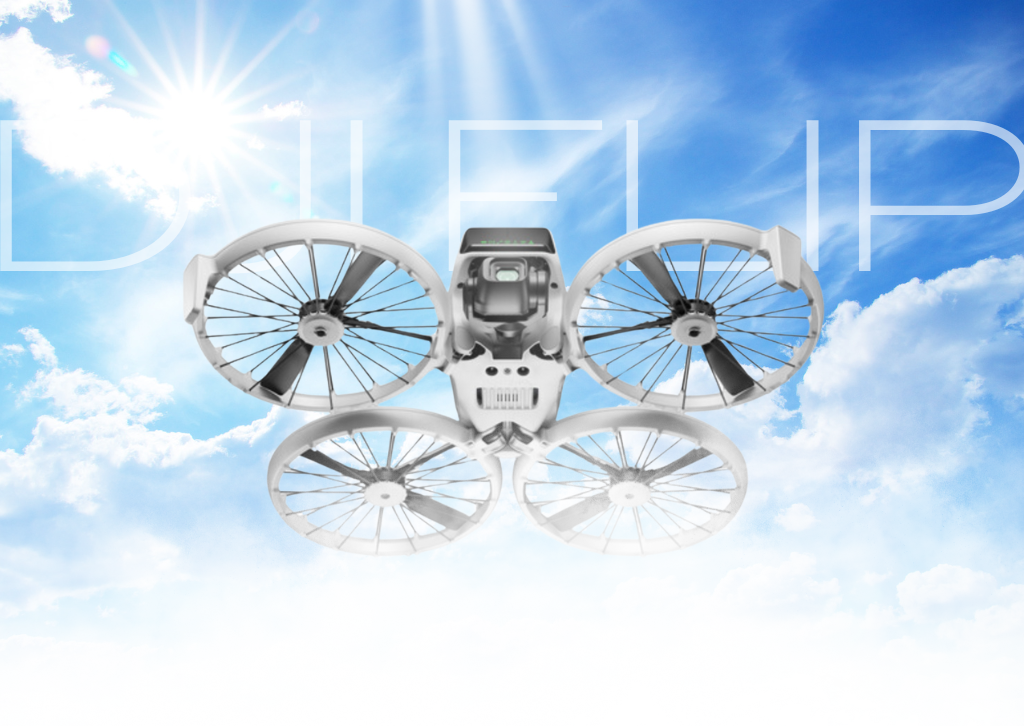
DJI Flip Review
The drone market is crowded, but every so often, a product comes along that carves out an entirely new niche. The DJI Flip is exactly that—a drone that rethinks the user experience from the ground up, prioritizing safety and accessibility without skimping on camera quality. It’s a compelling hybrid, blending the safety of a toy drone with the powerful imaging technology DJI is known for.
But is it the right drone for you? In this in-depth review, we’ll break down everything you need to know about the DJI Flip with the standard RC-N3 controller, from its unique design to its performance in the air.
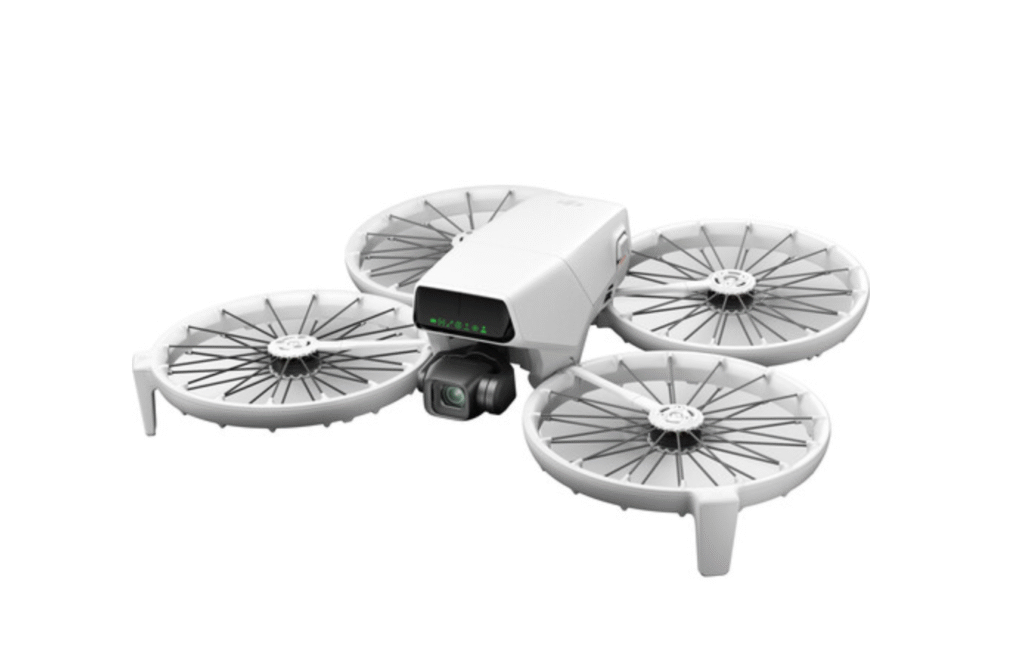
First Impressions: Safety is the Star
The first thing you’ll notice about the DJI Flip is its most defining feature: the foldable, full-coverage propeller guards. Unlike other drones where guards are an optional, clumsy accessory, they are an integral part of the Flip’s design. When unfolded for flight, they form a protective cage around the propellers. This is a game-changer for new pilots, allowing you to fly indoors or near people with a level of confidence that is simply not possible with other drones in this class.
At under 249 grams, the Flip is refreshingly lightweight and portable. This crucial weight class means that in many countries, including the United States, you won’t need to register it with aviation authorities for recreational use. The drone folds down into a compact package that can easily be tossed into a backpack, making it an ideal travel companion.
Core Specifications
| Feature | Specification |
|---|---|
| Takeoff Weight | < 249 g |
| Camera Sensor | 1/1.3-inch CMOS |
| Max Photo Resolution | 48 MP (RAW supported) |
| Max Video Resolution | 4K/60fps HDR |
| Vertical Video | 2.7K/30fps |
| Gimbal | 3-axis Mechanical |
| Max Flight Time | 31 minutes |
| Obstacle Sensing | Forward (3D Infrared) & Downward (Vision) |
| Video Transmission | O4 (Up to 13 km / 8.1 miles) |
| Controller | DJI RC-N3 (Requires Smartphone) |
Features That Matter
1. Unmatched Safety and Ease of Use: The propeller guards are the main event here. For beginners, the fear of crashing and destroying a new drone (or causing injury) is a major barrier. The Flip practically eliminates this fear. You can literally hand-launch it and hand-catch it without a worry. It also features a forward-facing 3D infrared sensor and downward vision sensors that help it automatically brake to avoid collisions. While it lacks the omnidirectional sensing of its pricier siblings, this is more than enough for a beginner to fly safely.
2. A Surprisingly Powerful Camera: DJI didn’t treat the Flip like a toy when it came to the camera. It features the same 1/1.3-inch CMOS sensor found in the excellent DJI Mini 4 Pro. This means you get crisp, vibrant 48MP photos and stunningly smooth 4K/60fps HDR video. The large aperture (f/1.7) performs admirably in lower light, and the inclusion of 10-bit D-Log M color profile is a fantastic bonus for creators who want to professionally color grade their footage. It also shoots native vertical video, perfect for TikTok and Instagram Reels.
3. Intelligent Flight Modes: The Flip comes loaded with DJI’s suite of automated flight and shooting modes. With FocusTrack, the drone can intelligently follow a subject (you, your car, your pet) while you focus on getting the perfect shot. QuickShots (like Dronie, Circle, and Helix) execute complex cinematic maneuvers with a single tap, giving your videos a professional flair without a steep learning curve.
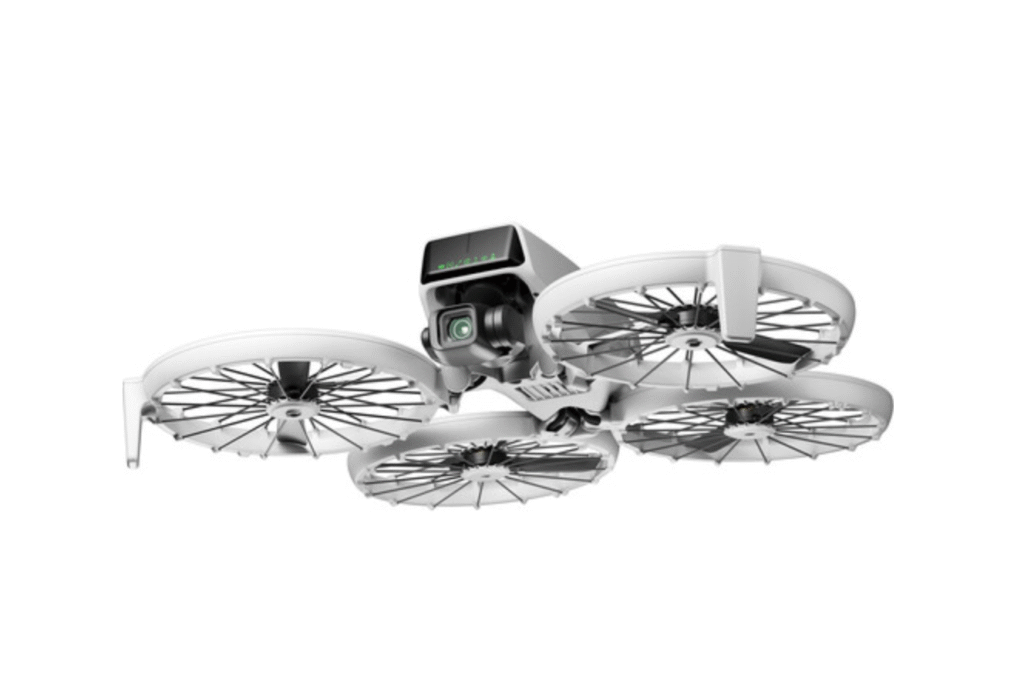
Who is the DJI Flip For?
This is the most important question, and the answer is refreshingly clear.
You should buy the DJI Flip if:
- You’re a complete beginner. This is arguably the safest, most intuitive, and most forgiving “real” drone on the market. The learning curve is practically flat.
- You’re a vlogger or social media content creator. The vertical video, reliable subject tracking, and ability to safely fly close to yourself or subjects make it an incredible tool for dynamic storytelling.
- You need to fly indoors. Real estate agents, inspectors, or anyone needing to capture indoor footage will find the integrated prop guards invaluable.
- You’re buying a drone for your family. It’s the perfect device for capturing vacations, family gatherings, and outdoor activities without the stress of a more complex drone.
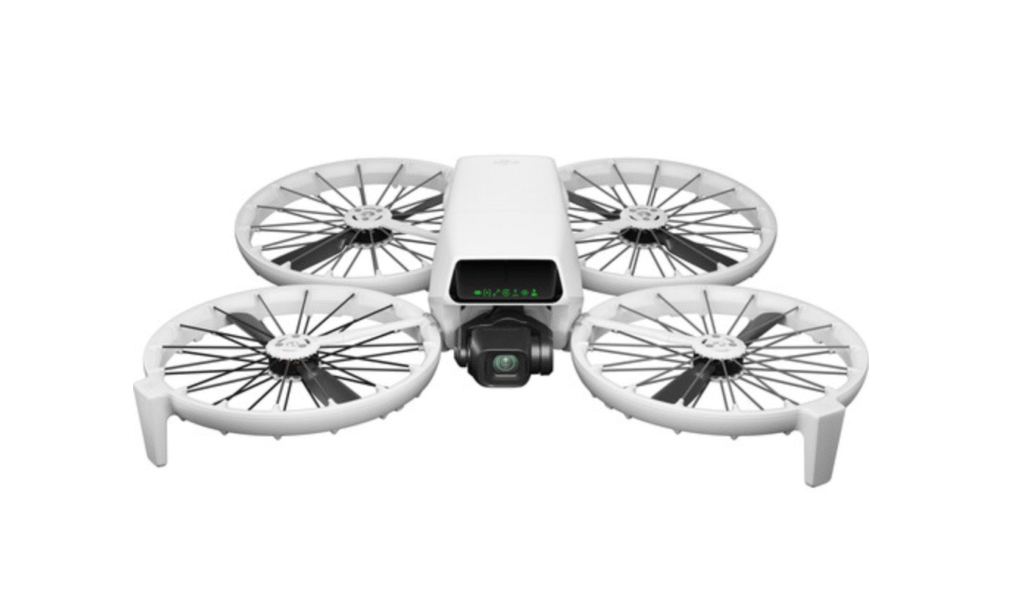
Who Should Look Elsewhere?
The Flip isn’t for everyone. Its focus on safety comes with some trade-offs.
You might want a different drone if:
- You’re a professional or prosumer pilot. You’ll miss the omnidirectional obstacle avoidance, higher-end flight performance, and more advanced camera settings of drones like the DJI Air 3 or Mavic 3 Pro.
- You often fly in windy conditions. At under 250g, the Flip can handle a breeze (it’s rated for Level 5 wind resistance), but it will struggle in strong winds more than a heavier drone.
- You need the absolute best image quality. While the camera is excellent, it’s not on the same level as the larger sensors in DJI’s top-tier drones.
- You’re on a very tight budget. The DJI Neo offers a similar safety-first approach with a less capable camera at a lower price point.
Competitor Comparison
| Feature | DJI Flip | DJI Mini 4 Pro | DJI Neo |
|---|---|---|---|
| Weight | < 249 g | < 249 g | ~135 g |
| Propeller Guards | Integrated, Full-Coverage | Optional accessory | Integrated, Full-Coverage |
| Camera Sensor | 1/1.3-inch CMOS | 1/1.3-inch CMOS | 1/2-inch CMOS |
| Max Video | 4K/60fps HDR | 4K/100fps HDR | 4K/30fps |
| Obstacle Avoidance | Forward & Downward | Omnidirectional | None |
| Max Flight Time | 31 mins | 34 mins | 18 mins |
| Primary Advantage | Unmatched Safety & Ease of Use | Pro Features & Best Camera | Ultra-Portable & Affordable |
| Approx. Price | $439 | $759 | $329 |
Final Verdict
The DJI Flip is a triumph of user-centric design. DJI has successfully identified the biggest fears of new drone pilots and addressed them head-on without sacrificing the quality that makes their products leaders in the field. The combination of a top-tier camera with a virtually crash-proof design is a winning formula.
While it may not be the drone for seasoned professionals, the DJI Flip is an enthusiastic and confident recommendation for beginners, content creators, and anyone who has been “drone-curious” but intimidated by the complexity and risk. It’s fun, it’s safe, and it produces incredible results. For its target audience, the DJI Flip is nearly perfect.
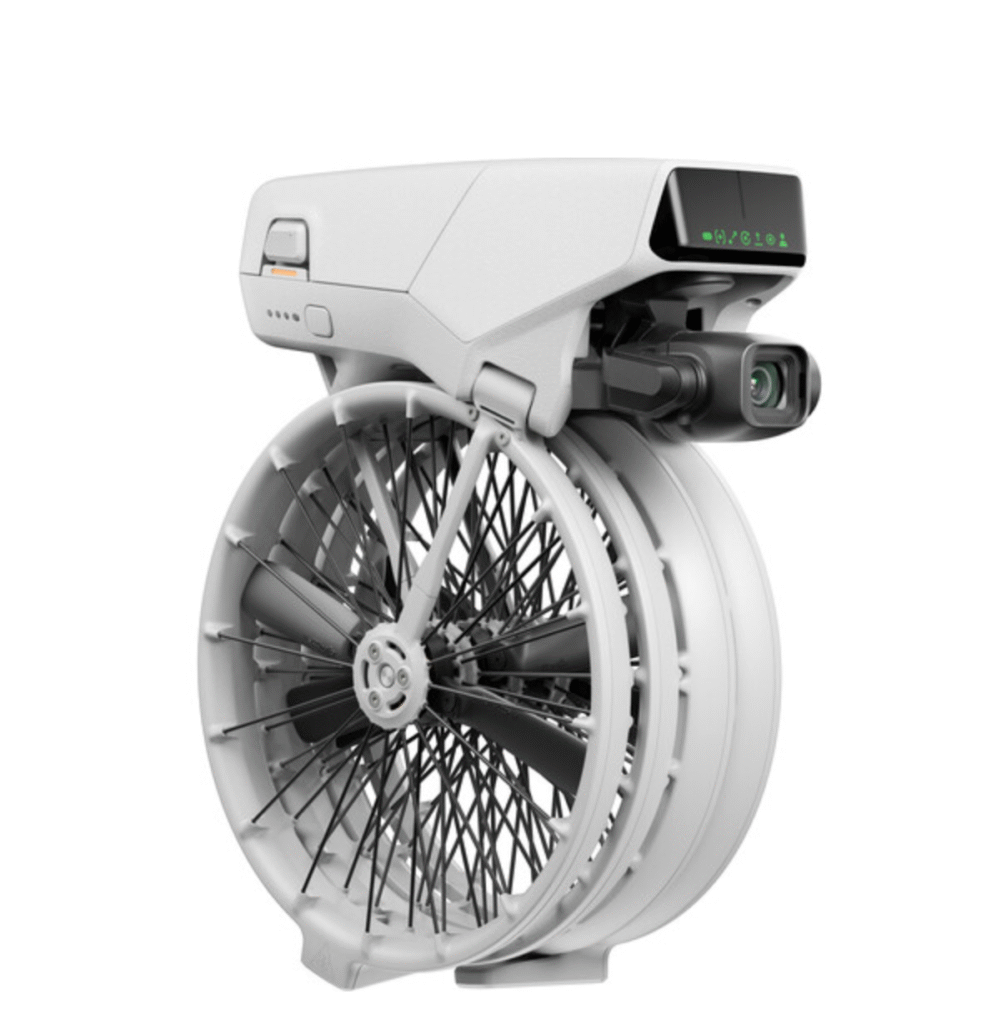
Frequently Asked Questions (Q&A)
Q: Do I need to register the DJI Flip with the FAA? A: No. Because it weighs less than 250 grams, the DJI Flip does not require FAA registration for recreational flying in the United States. Always check your local laws and regulations before flying.
Q: How durable are the propeller guards in a crash? A: They are surprisingly resilient. They are designed to absorb impact from bumps into walls or light branches. While a severe, high-speed crash could still cause damage, they provide excellent protection for everyday mishaps.
Q: Can I use a different controller with the DJI Flip? A: Yes, the Flip is also compatible with the DJI RC 2 controller, which has a built-in screen and removes the need to use your smartphone.
Q: How does the camera’s vertical video mode work? A: The gimbal physically rotates the camera to shoot in a 9:16 aspect ratio. The DJI Flip can shoot up to 2.7K resolution in this mode, which is perfect for high-quality social media content.
Q: Is the flight time really 31 minutes? A: 31 minutes is the maximum time achieved in ideal, windless conditions. In real-world flying, expect closer to 20-25 minutes, which is still very respectable for a drone of this size.

For more awesome drone reviews visit our Drone Reviews section.

Drones
DJI Mavic 3 Pro: The Ultimate Creator’s Drone That Redefines Aerial Excellence
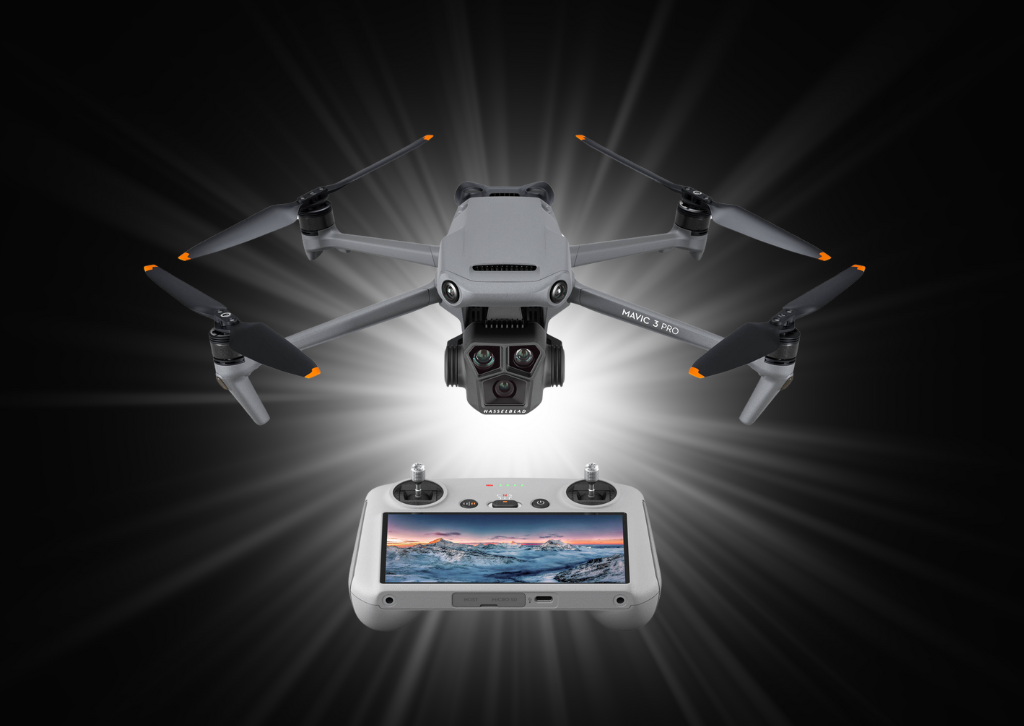
DJI Mavic 3 Pro
The drone market has evolved dramatically over the past decade, with DJI consistently leading the charge in innovation and performance. The DJI Mavic 3 Pro represents the pinnacle of this evolution, combining professional-grade camera capabilities with intelligent flight systems in a remarkably portable package. After extensive testing across various scenarios, from cinematic productions to casual weekend adventures, it’s clear that this drone sets a new standard for what creators can expect from aerial photography and videography equipment.
Design and Build Quality: Engineering Excellence in Miniature
The Mavic 3 Pro strikes an impressive balance between portability and professional capability. When folded, it measures just 221×96.3×90.3mm, making it surprisingly compact for a drone with such advanced features. The build quality is exceptional, with a magnesium alloy frame that feels both lightweight and incredibly sturdy. The precision engineering is evident in every detail, from the smooth folding mechanism to the satisfying click of the gimbal lock.
The drone’s weight of 958 grams places it in the sub-1kg category, which is crucial for regulatory compliance in many regions. Despite this relatively light weight, the Mavic 3 Pro feels substantial and well-balanced in hand. The propellers fold neatly against the body, and the entire package fits comfortably in the included carrying case, making it genuinely portable for travel and outdoor adventures.
The controller deserves special mention for its ergonomic design and premium feel. The RC Pro controller features a bright 5.5-inch touchscreen that remains visible even in direct sunlight, eliminating the need to connect a separate mobile device. The control sticks are removable for storage, and the overall button layout feels intuitive after a short learning curve.
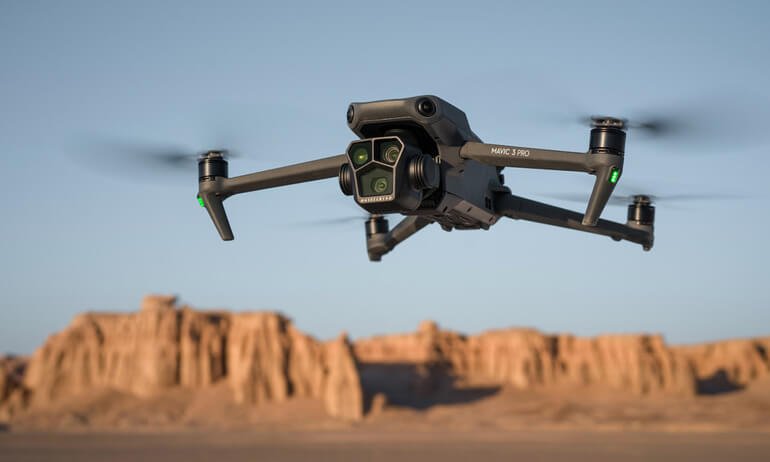
Camera System: Triple-Lens Innovation
The standout feature of the Mavic 3 Pro is undoubtedly its triple-camera system, which represents a significant leap forward in drone imaging capabilities. The primary Hasselblad camera features a 4/3 CMOS sensor capable of capturing 20-megapixel stills and 5.1K video at 50fps. The larger sensor size compared to previous Mavic models results in dramatically improved low-light performance and dynamic range.
The Hasselblad partnership brings genuine color science improvements, with natural color reproduction that requires minimal post-processing for many applications. The 10-bit D-Log M color profile provides exceptional flexibility for professional color grading, while the standard color profiles deliver vibrant, social-media-ready footage straight out of camera.
The medium telephoto camera adds a 70mm equivalent focal length with a 1/1.3-inch CMOS sensor, perfect for portrait-style shots and compressed perspectives that would be impossible with a traditional wide-angle drone camera. This 28x hybrid zoom capability opens up creative possibilities that were previously unavailable in the consumer drone market.
Perhaps most intriguing is the tele camera with its 166mm equivalent focal length and 1/2-inch sensor. This 7x optical zoom lens enables detailed inspection shots, wildlife photography, and surveillance applications while maintaining safe distances from subjects. The zoom functionality works seamlessly across all three cameras, providing smooth transitions that feel natural during flight.
Flight Performance: Precision Meets Power
The Mavic 3 Pro’s flight characteristics are simply outstanding. The drone feels incredibly stable in the air, even in moderate wind conditions. During testing in 15-20 mph winds, the Mavic 3 Pro maintained rock-steady hovering and smooth forward flight, with the advanced obstacle avoidance system working flawlessly to navigate around trees and structures.
The O3+ transmission system provides exceptional range and reliability, with a maximum transmission distance of 15km (9.3 miles) under ideal conditions. In real-world testing, the connection remained stable and clear at distances exceeding 3 miles with no significant latency or interference. The automatic frequency switching helps maintain connection quality even in areas with heavy radio interference.
Battery life is impressive, with the intelligent flight battery providing up to 43 minutes of flight time under optimal conditions. In practical use, expect 35-40 minutes depending on flying style, weather conditions, and camera usage. The battery charges relatively quickly, reaching 80% capacity in about an hour with the standard charger.
The various flight modes cater to different skill levels and applications. Normal mode provides a good balance of responsiveness and stability for general flying. Sport mode unleashes the drone’s full performance potential, reaching speeds up to 47 mph, while Cine mode offers ultra-smooth movements perfect for cinematic shots.
Intelligent Features: AI-Powered Creativity
DJI’s intelligent flight modes have reached new levels of sophistication with the Mavic 3 Pro. ActiveTrack 5.0 demonstrates remarkable subject recognition and tracking capabilities, maintaining focus on people, vehicles, and even animals with impressive accuracy. The tracking works reliably even when subjects are partially obscured or moving unpredictably.
The obstacle avoidance system uses multiple sensors to create a comprehensive awareness of the surrounding environment. During aggressive flight testing, the drone consistently detected and avoided obstacles, including thin branches and power lines that have challenged previous generation systems. The APAS 5.0 system doesn’t just stop when encountering obstacles; it intelligently plans alternate routes to maintain flight objectives.
Point of Interest (POI) mode creates stunning orbital shots with minimal pilot input, while Waypoints 3.0 allows for precise, repeatable flight paths perfect for professional applications. The MasterShots feature automatically captures a variety of cinematic shots and combines them into a polished video complete with music and transitions.
For beginners, the enhanced Return-to-Home function provides peace of mind with multiple failsafe options. The drone can return to its takeoff point, the pilot’s current location, or a preset alternate location depending on the situation. GPS positioning is typically accurate to within one meter, ensuring precise landings even in challenging conditions.
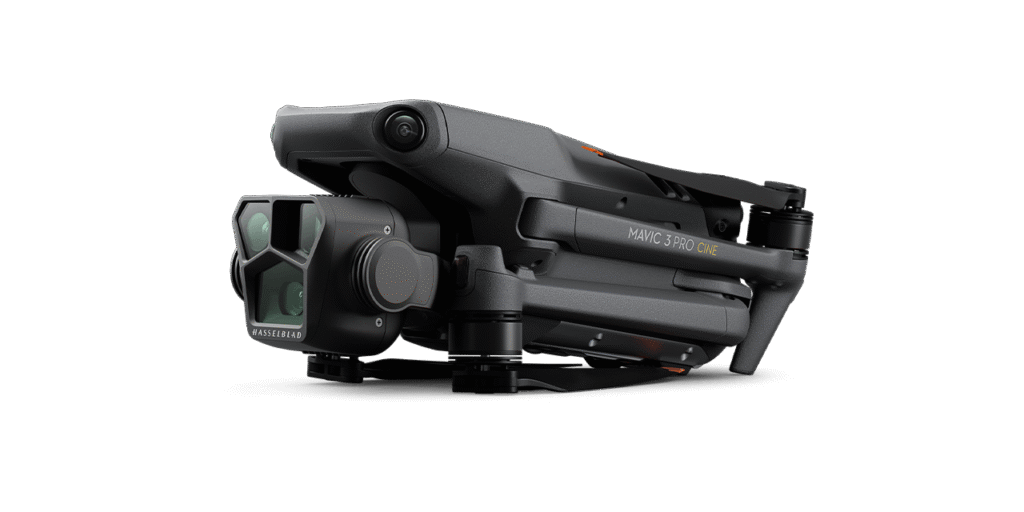
Image and Video Quality: Professional Results
The image quality from the Mavic 3 Pro is genuinely impressive, rivaling dedicated camera systems costing significantly more. The 20-megapixel stills exhibit excellent detail and dynamic range, with the larger sensor providing noticeable improvements in shadow detail and highlight retention compared to smaller sensor drones.
Video quality is where the Mavic 3 Pro truly shines. The 5.1K resolution provides ample room for cropping and stabilization in post-production while maintaining 4K output quality. The 10-bit D-Log M profile captures an impressive 12.8 stops of dynamic range, providing professional colorists with substantial flexibility for creative grading.
The mechanical gimbal provides exceptional stabilization, producing smooth footage even during aggressive maneuvering. The gimbal’s range of motion allows for creative angles including straight-down shots and dramatic reveal movements that add cinematic flair to productions.
Low-light performance is notably improved over previous Mavic models, with usable footage possible in surprisingly dim conditions. While not matching the performance of full-frame cameras, the results are impressive for a drone of this size and price point.
User Experience: Intuitive Yet Sophisticated
The DJI Fly app continues to evolve, providing an increasingly polished user experience. The interface is logical and responsive, with quick access to essential settings and shooting modes. The app’s editing capabilities have improved significantly, allowing for basic color correction, trimming, and effects application directly on mobile devices.
Flight preparation is streamlined through the app’s preflight checklist and airspace awareness features. The integration with DJI’s geofencing database helps ensure compliance with local regulations, while the enhanced flight log system provides detailed analytics for professional users.
The learning curve for new pilots is reasonable, thanks to comprehensive tutorial modes and progressive skill-building exercises built into the app. Experienced pilots will appreciate the extensive customization options and professional-grade settings available in the advanced menus.
Professional Applications: Versatility Across Industries
The Mavic 3 Pro’s capabilities extend far beyond recreational use, making it suitable for various professional applications. Real estate photographers will appreciate the multiple focal lengths and superior image quality for property showcases. The extended flight time and reliable transmission make it ideal for large property surveys and commercial shoots.
Content creators benefit from the automated shooting modes and high-quality 4K output that’s ready for social media platforms. The various aspect ratio options and built-in editing capabilities streamline the workflow from capture to publication.
For inspection and survey work, the telephoto capabilities allow for detailed examination of infrastructure, rooftops, and other structures while maintaining safe distances. The precision hovering and waypoint capabilities enable repeatable inspection routes for ongoing monitoring applications.
Limitations and Considerations
Despite its many strengths, the Mavic 3 Pro isn’t without limitations. The price point places it firmly in the professional/enthusiast category, potentially excluding casual users who might find better value in entry-level models. The complexity of the triple-camera system may overwhelm users who simply want straightforward aerial photography.
The drone’s size, while compact for its capabilities, is still larger than some competitors in the consumer market. This can impact portability for backpacking or ultra-lightweight travel scenarios. Additionally, the sophisticated features require some learning investment to utilize fully.
Battery life, while improved, still requires careful planning for extended shooting sessions. Having multiple batteries is essential for professional work, adding to the overall system cost and carrying weight.
Conclusion: Setting New Standards
The DJI Mavic 3 Pro represents a quantum leap in drone technology, successfully bridging the gap between professional capability and consumer accessibility. The triple-camera system alone justifies the investment for serious creators, while the overall package delivers on virtually every front that matters.
For professional photographers and videographers, the Mavic 3 Pro offers genuine creative capabilities that were previously unavailable in portable drone systems. The image quality, flight performance, and intelligent features combine to create a tool that enhances rather than limits creative vision.
While the price point may seem steep initially, the value proposition becomes clear when considering the alternative costs of achieving similar shots through traditional methods. The Mavic 3 Pro effectively replaces multiple pieces of equipment and opens up shot possibilities that would be impossible or prohibitively expensive to achieve otherwise.
The DJI Mavic 3 Pro earns a strong recommendation for anyone serious about aerial photography and videography. It’s not just an incremental improvement over previous models; it’s a fundamental advancement that redefines what’s possible in a portable drone package. Whether you’re a content creator, professional photographer, or enthusiast looking to push creative boundaries, the Mavic 3 Pro delivers the tools needed to capture extraordinary aerial content with unprecedented ease and quality.
This drone doesn’t just meet expectations; it exceeds them in ways that will inspire new creative approaches and elevate the final quality of your aerial work. In a market filled with capable options, the Mavic 3 Pro stands out as the clear choice for those who demand the best in drone technology.

🚀 Take your adventures to new heights! Whether you’re a beginner pilot or a pro filmmaker, the right drone makes all the difference. Discover expert insights, side-by-side comparisons, and honest reviews to help you choose the perfect drone for your needs.
-

 Photography3 months ago
Photography3 months agoSony FE 16mm f/1.8 G Review: The Ultra-Wide Prime for the Modern Creator
-
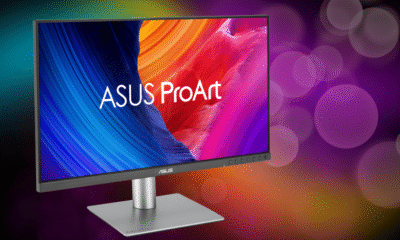
 Computers3 months ago
Computers3 months agoAsus ProArt Display 6K PA32QCV Review: A Visual Feast for Professionals
-

 Tablets5 months ago
Tablets5 months agoClash of the Titans: 13″ iPad Pro M4 vs. Samsung Galaxy Tab S10 Ultra – Which Premium Tablet Reigns Supreme?
-

 Home Tech3 months ago
Home Tech3 months agoThe Guardian of Your Threshold: An In-Depth Review of the Google Nest Doorbell
-

 Computers4 months ago
Computers4 months agoASUS Zenbook Duo: A Pretty Awesome Dual-Screen Laptop
-

 Photography3 months ago
Photography3 months agoAdobe’s “Project Indigo” is the iPhone Camera App We’ve Been Waiting For, and It’s Awesome
-

 Photography3 months ago
Photography3 months agoDJI Osmo 360 go: The Next Generation of Immersive Storytelling?
-

 Health Tech3 months ago
Health Tech3 months agoLumen Metabolism Tracker: A Deep Dive into Your Metabolic Health
-

 Computers3 months ago
Computers3 months agoApple Mac Studio Review: A Desktop Powerhouse Redefined
-

 Home Tech3 months ago
Home Tech3 months agoRevolution R180 Connect Plus Smart Toaster: More Than Just Toast?
-

 Computers3 months ago
Computers3 months agoSamsung 15.6” Galaxy Book5 360 Copilot AI Laptop: A Deep Dive into the Future of Productivity
-

 Photography3 months ago
Photography3 months agoCanon EOS 5D Mark II: A Timeless Workhorse for Discerning Photographers
